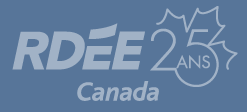1. Introduction: The Intersection of Quantum Principles and Modern Digital Experiences
In an era where digital trust is the cornerstone of online interaction, quantum principles are emerging as silent architects reshaping how we verify identity, secure data, and perceive transparency. While traditional encryption relies on mathematical complexity, quantum security introduces fundamentally new paradigms—rooted in the laws of physics rather than computational assumptions. This shift transforms digital identity from a static construct into a dynamic, verifiable reality.
« Quantum mechanics challenges the very foundation of trust: no longer based on secrecy, but on observable, measurable phenomena that cannot be replicated without detection. »
- Quantum technology introduces verification methods based on quantum states—such as superposition and entanglement—that inherently resist forgery. Unlike classical encryption, which depends on the difficulty of solving mathematical problems, quantum-based systems detect any unauthorized measurement, ensuring integrity at the physical level.
- One pivotal advancement is Quantum Key Distribution (QKD), which enables two parties to share encryption keys with provable security. Even with quantum computers advancing, QKD remains immune to computational breakthroughs, offering a future-proof layer for sensitive communications.
- Beyond QKD, quantum sensors and quantum random number generators are redefining trust in authentication processes. These tools exploit quantum indeterminacy to produce truly unpredictable values, eliminating biases and vulnerabilities inherent in pseudorandom systems.
- Quantum Trust Levels
- Quantum systems enable layered trust: physical-layer verification, cryptographic assurance, and real-time anomaly detection.
- Everyday Impact
- From banking apps to secure messaging, quantum-enhanced protocols are quietly enabling trust at scale—ensuring users interact with systems they can verify, not just be told to trust.
Table: Quantum Trust Mechanisms in Comparison with Classical Systems
| Mechanism | Quantum Key Distribution (QKD) | Classical Asymmetric Encryption (RSA, ECC) | Detection of eavesdropping via quantum state disturbance | |
|---|---|---|---|---|
| Quantum Random Number Generation | True randomness from quantum phenomena | |||
| Quantum Authentication | Physics-based identity verification |
The transition from classical to quantum trust models is not merely technical—it’s epistemological. Where prior systems assumed trust through secrecy, quantum architectures make trust observable, measurable, and inherently protected by nature’s laws.
- Quantum digital trust redefines identity by anchoring it in physical reality rather than mathematical assumptions.
- This evolution enables real-time verification and tamper-evidence, reducing reliance on static credentials and centralized authorities.
- Psychologically, users gain stronger confidence—knowing that trust is not declared but demonstrably guaranteed.
« Trust in the digital age is no longer a promise—it’s a physical fact, verified through quantum laws. »
- Psychological Foundations
- Quantum trust architectures foster deeper confidence by making security visible and verifiable. When users perceive security as rooted in natural laws—not just software—they experience reduced anxiety and increased willingness to engage digitally.
- Future Trajectory
- As quantum networks expand, we anticipate hybrid trust models blending classical and quantum methods—ensuring seamless, resilient digital interactions across sectors from finance to healthcare.
For a foundational overview of how quantum principles are reshaping digital experiences, return to the parent article: How Quantum Principles Shape Modern Digital Experiences.





